- Enterprise
- Essentials
Your Guide to Global Ecommerce: How to Expand into Foreign Markets and Increase Ecommerce Sales

Increase Your Ecommerce Sales from $1 million to $100 Million
Almost 60 years ago, in his book The Gutenberg Galaxy, Canadian media theorist Marshall McLuhan coined the term "global village" — the idea that the world is becoming a single community of people linked by new media technologies.
Although McLuhan was referring to the technologies of his time, such as radio and television, this concept of the global village still applies today, and perhaps even more so. With constant advancements in telecommunications and the Internet, particularly the advent of the smartphone and social media, our world is becoming increasingly interconnected — and nothing exemplifies this more than the rise of global ecommerce.
What is Global Ecommerce?
Global ecommerce is the process of selling products or services online across geopolitical borders to customers in foreign countries. Compared to local ecommerce, in which a retailer only sells within its country of origin, global ecommerce allows merchants to expand into non-native markets and reach new customers.
With so many ecommerce platforms, marketplaces and digital solutions available, there are practically no limits for merchants looking to sell online, which makes it easier than ever for businesses to go global.
Global Ecommerce Growth and Statistics
Although the coronavirus pandemic posed some challenges for retail this last year, according to eMarketer, global retail ecommerce sales still experienced a 27.6% growth rate in 2020, with sales reaching well over $4 trillion.
Not to mention many national markets saw double-digit growth in global ecommerce sales. Most notably, Latin America’s online sales grew by 36.7%, followed by North America at 31.8%.
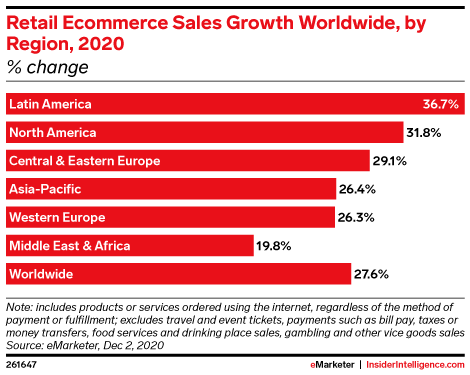
But when it comes to national and regional rankings for online retail sales, China, the US and the United Kingdom take the lead. Measured as a percentage of worldwide total retail sales, China held 52% of market share in 2021, followed by the US at 19% and the UK at 4.8%.
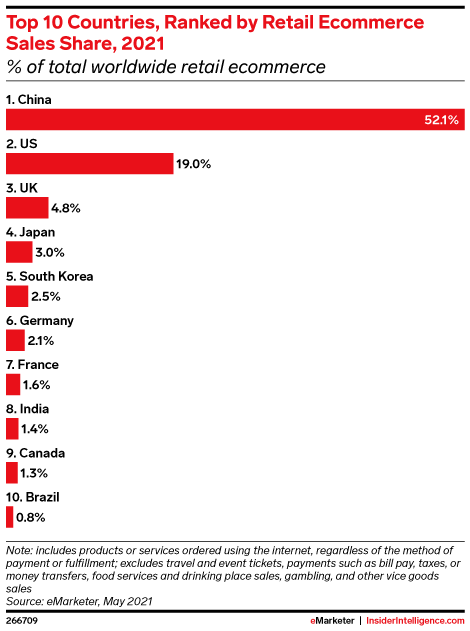
However, you may be shocked to hear that 58% of global ecommerce market share is held by just six ecommerce companies: Taobao.com (15%) and TMall.com (14%) (both owned by Alibaba Group), Amazon (13%), JD.com (9%), Pinduoduo (4%) and eBay (3%). And only 5% of market share is taken up by other big-name retailers Rakuten, Walmart, VIP.com, Sunning.com, Apple and Shopee.
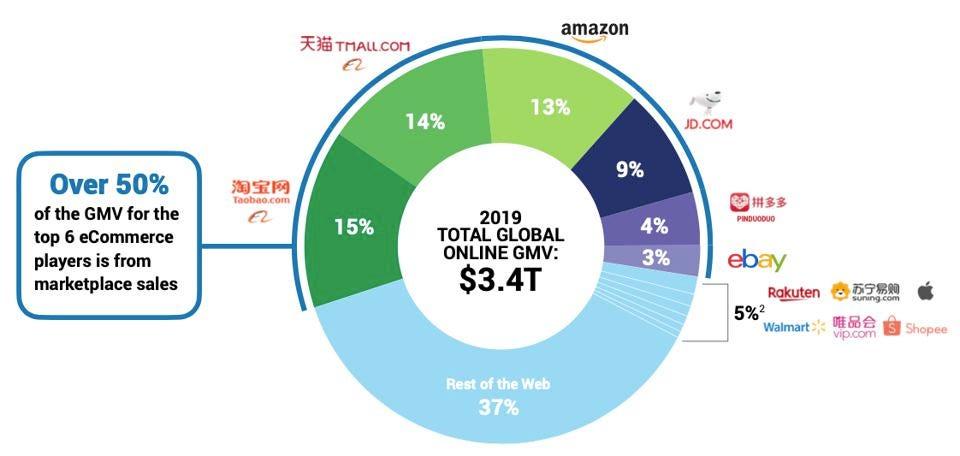
Setting Up Your International Ecommerce Strategy
Luckily for traditional retailers, ecommerce is a great opportunity to dip your toes into foreign markets before launching a new brick-and-mortar store abroad. But before diving headfirst into your global expansion, it’s important to understand that every country is different and requires its own unique strategy.
To determine whether your ecommerce business is ready for international expansion, here are a few key areas to evaluate.
- Operations: While there’s no need to hire an entirely new team or establish all new processes, you will need to make sure that your existing resources are equipped to handle international expansion. Team members should either have international experience or be willing to expand their skillsets. Or, it may be beneficial to build separate teams, as well as separate budgets, for domestic and global operations.
- Product demand vs. international supply: Using SEO tools to track search activity, merchants can measure how often foreign customers visit their site, as well as which products their target customers purchase the most often in their home countries.
- Scope of expansion: Clearly outlining the scope of your expansion will make it easier to take tangible steps toward success. Define your business needs, such as whether you need to open a new brick-and-mortar store or simply adapt your web design or payment methods to meet the needs of your new market.
Establishing Your Global Ecommerce Platform and Integrations
Now that you have your international strategy in place, it’s time to start adapting your ecommerce platform to meet the needs of your new audience. Each global marketplace requires its own planning and consideration, so make sure you’re taking the time to prepare your online store accordingly.
Here we’ll highlight four areas to consider when launching your business abroad.
1. Pricing.
According to Harvard Business Review, how customers perceive pricing is just as important as the price itself. Even if a company offers the same prices as its competitors, there are tactics that marketers can use to make customers perceive their prices as lower than the market average.
For example, in high-context countries like China, India, Brazil and Argentina, products sell better when prices end in zero (such as $10.00), and in low-context markets like the US, Australia and Norway, customers respond better to prices that end in 9 ($9.99).
Although it may seem straightforward, currency conversion is another pain point to consider. In the face of fluctuating exchange rates, many global retailers instead set a fixed rate, which helps ensure consistency in pricing. However, be sure to display prices in local currency, as leaving prices in USD can lead to abandoned shopping carts and decreased conversion rates.
2. Payments.
According to Statista, in 2020, credit cards and digital/mobile wallets tied as the most popular ecommerce payment methods in the US, both holding 30% of the total payment count.
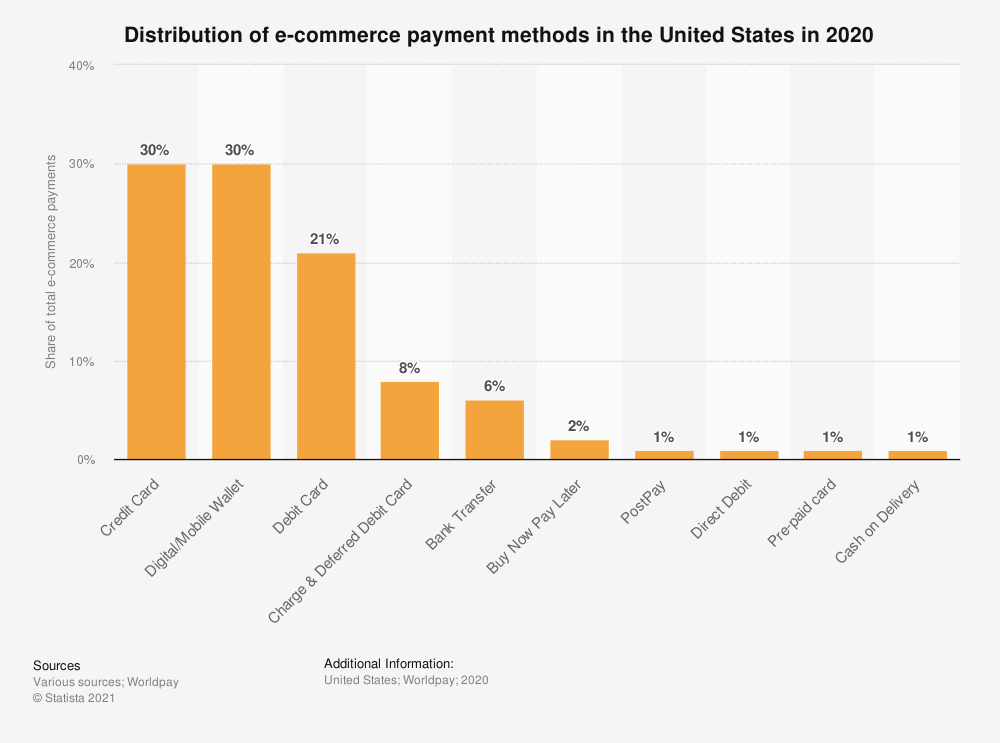
However, looking at payment methods from a global standpoint, the rankings are a bit different. In 2020, digital and mobile wallets (such as Apple Pay and PayPal) accounted for a whopping 45% of global ecommerce transactions, towering over credit cards, which sit in second place at only 23% market share.
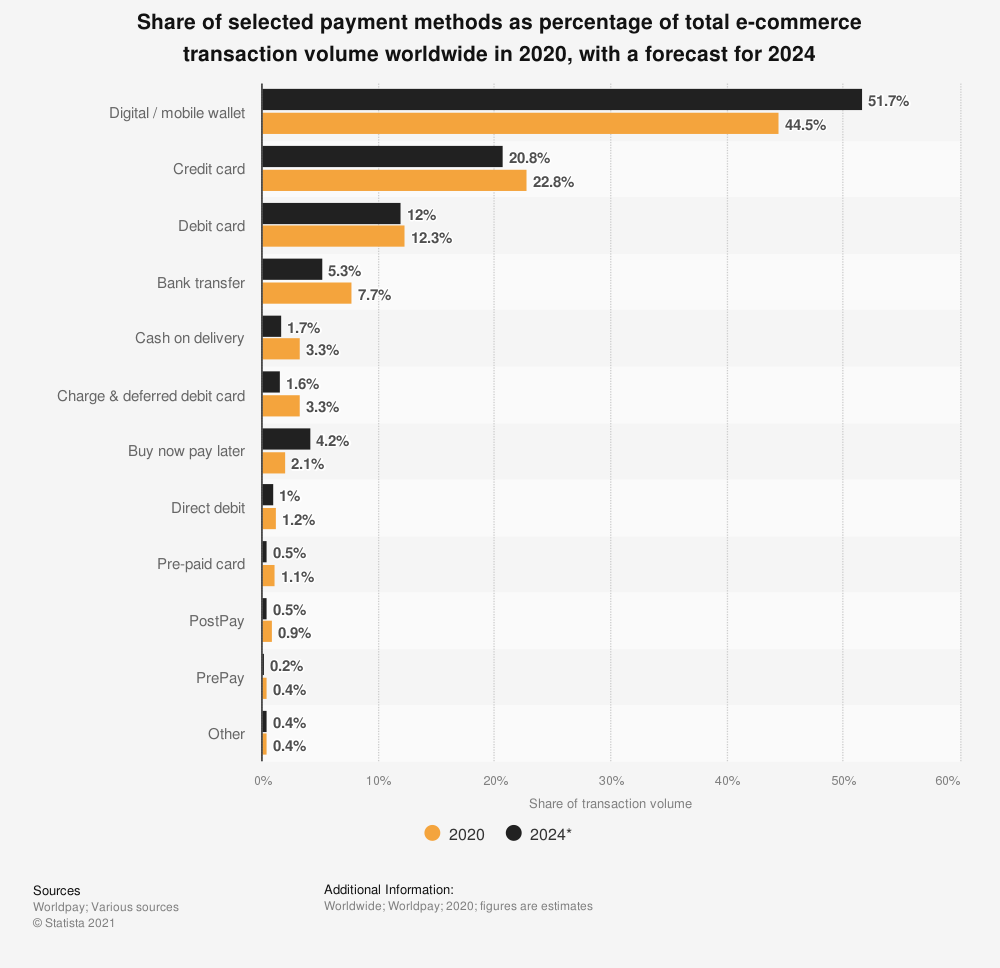
This goes to show that customer payment preferences vary from country to country — so you can’t expect customers abroad to always pay in credit card.
For example, in Mexico, 86% of all payments are cash, and in Southeast Asia, only 15% of the population owns a credit or a debit card, while almost a third of the population doesn’t own a bank account.
While it may be easy to overlook something as simple as how people pay, these details can be the difference between making a sale and losing a potential customer. So instead of defaulting to credit cards, do some research and make sure you’re catering to the preferences of your target audience.
3. Customer service.
Just because your customers live abroad doesn't mean they should be out of sight and out of mind. Customer service is equally as important for your global markets as it is for your domestic market.
Especially when considering elements like return and exchange policies, it’s easy to assume that businesses in other countries operate the same as they do in the US. While many American stores have a no-questions-asked return policy, shoppers in France often assume that all purchases are final, and in Japan, many stores won’t accept returns for arbitrary reasons. Thus, when expanding globally, you’ll need to be mindful about how to address each country’s return policy depending on the preferences of the market.
Another key aspect of customer service is the method of communication. Looking at the graph below by Statista, it’s clear that the preferred communication channels vary widely from country to country, although phone/voice, email and live chat consistently hold the greatest popularity.
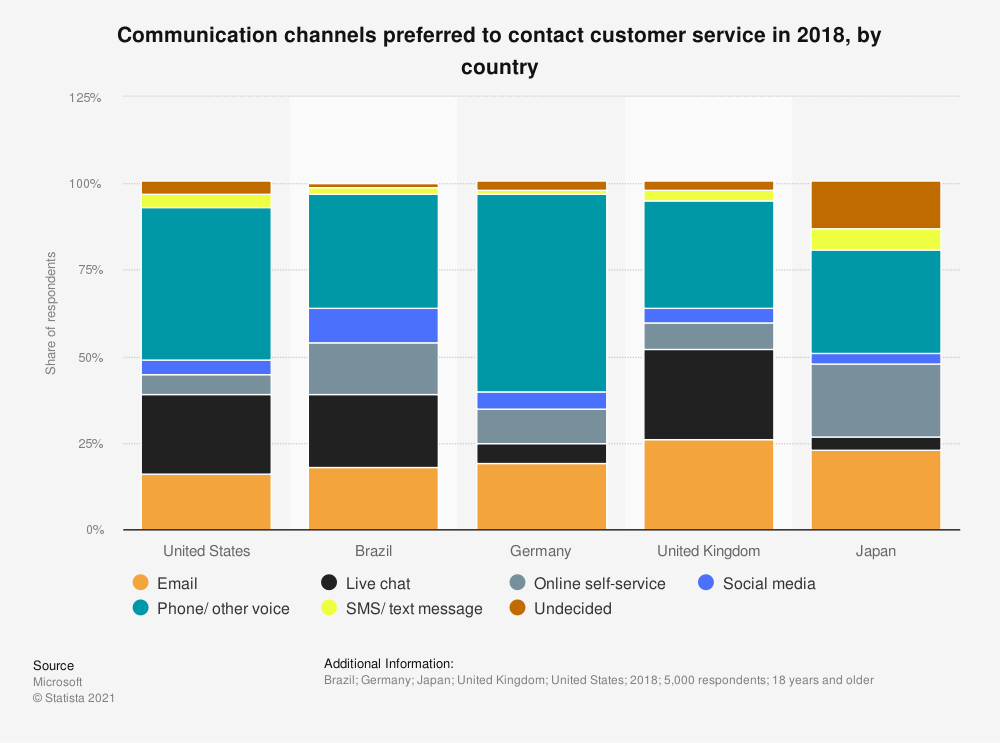
4. Shipping and logistics.
According to Statista, the majority of challenges that business owners face in global ecommerce are related to shipping and logistics:
Navigation customs: 44.5%
Cross-border logistics: 37%
Cross-border returns: 33.5%
Managing delivery expectations: 34.5%
Tracking deliveries: 27.5%
However, by leveraging new technologies and multi-carrier software platforms, merchants can navigate these logistical challenges with greater ease and efficiency.
Ensuring that customers have flexible shipping options and transparent pricing is key, especially when selling overseas. A 2017 DHL report revealed that retailers who offer a premium delivery offering (such as expedited shipping) grow 60% faster than the average. So while it may be the easier option to offer only a standard home-delivery option, it may be worth considering expanding your horizons.
Global Ecommerce Trends
It’s no surprise that the pandemic has had serious implications for the ecommerce industry. With stay-at-home orders forcing merchants to reinvent how they do business, global ecommerce has experienced drastic change over the past two years — and many of the trends seem to be here for the long haul.
1. Supply chain resilience.
Undoubtedly, one of the biggest wakeup calls of COVID-19 was the impact on global supply chains and the resulting consequences on global marketplaces. An unprecedented disruption, the pandemic forced companies to rethink the way their processes — which traditionally relied on low-cost supply and minimal inventory — and start building supply chain resilience. By stabilizing their supply chains, retailers can be better equipped to respond quickly to change and mitigate future risk. Retailers can be proactive by strengthening supplier relationships, increasing digitalization, investing in omnichannel distribution and utilizing “advanced technologies such as predictive analytics, machine learning and AI,” according to a report by Deloitte.
2. Online shopping outside borders.
The beauty of global ecommerce is that you don’t necessarily need to have a significant global presence to be found by audiences abroad — many online shoppers are already searching for products and services outside of their home countries.
In a survey of 33,594 consumers across 40 countries conducted by the International Post Corporation, 32% said they made more online purchases in 2020 from retailers in foreign countries due to the pandemic, and 51% plan to do more cross-border online shopping in the future.
This means you don’t necessarily need a brick-and-mortar store in another country to gain a following — sometimes all you need is a strong online advertising campaign or social media strategy. Using tools like Google Ads and Facebook Ads, you can test the waters for new markets before diving headfirst.
3. China and APAC market expansion.
As one of the world’s largest economies with enormous spending power, China holds significant revenue opportunities for ecommerce retailers looking to expand globally. In fact, by 2023, retail ecommerce sales in the Asia-Pacific (APAC) region are expected to be greater than the rest of the world combined, largely as a result of urbanization, technological advancements, and a growing population.
And China specifically led the world in ecommerce this year, claiming 33.3% of the global total of digital buyers and producing $2.779 trillion in ecommerce sales. Plus, the Chinese market will become the first in history to transact over half of its retail sales digitally (52.1%).
Of course, expanding to China isn’t always a walk in the park. With 80% of the Chinese ecommerce market controlled by ecommerce giant Alibaba (and greater sales than both eBay and Amazon combined), many retailers might shy away from the competition.
But despite high entry barriers, there are a few key tactics that retailers can use to tackle the Chinese market:
- Partner with local, established vendors.
- Create a team that’s based in China, whether it be for marketing, engineering or sales purposes.
- Build an online presence. While China does not allow social or advertising content on sites like Facebook or Instagram, retailers can establish themselves on local third-party marketplaces or branded ecommerce sites.
4. Localized language.
This one may be a no-brainer, but making sure your ecommerce site is in your target market‘s local language can be a huge make or break for your business.
Considering 40% of shoppers will not purchase from a website if the content is in another language, this is too high a number to simply assume that your customers speak English. By localizing your site language, you’ll not only be able to communicate better with your customers, but it may also help your site rank higher on search engines — which means more eyes on your products and more opportunities for sales.
While the goal should be to translate your entire website to your audience’s local language, there are a few aspects of the shopping experience that are especially important.
According to Flow’s Global Research Report, the checkout process, product description pages and reviews were the most important areas needed in shoppers’ local language.
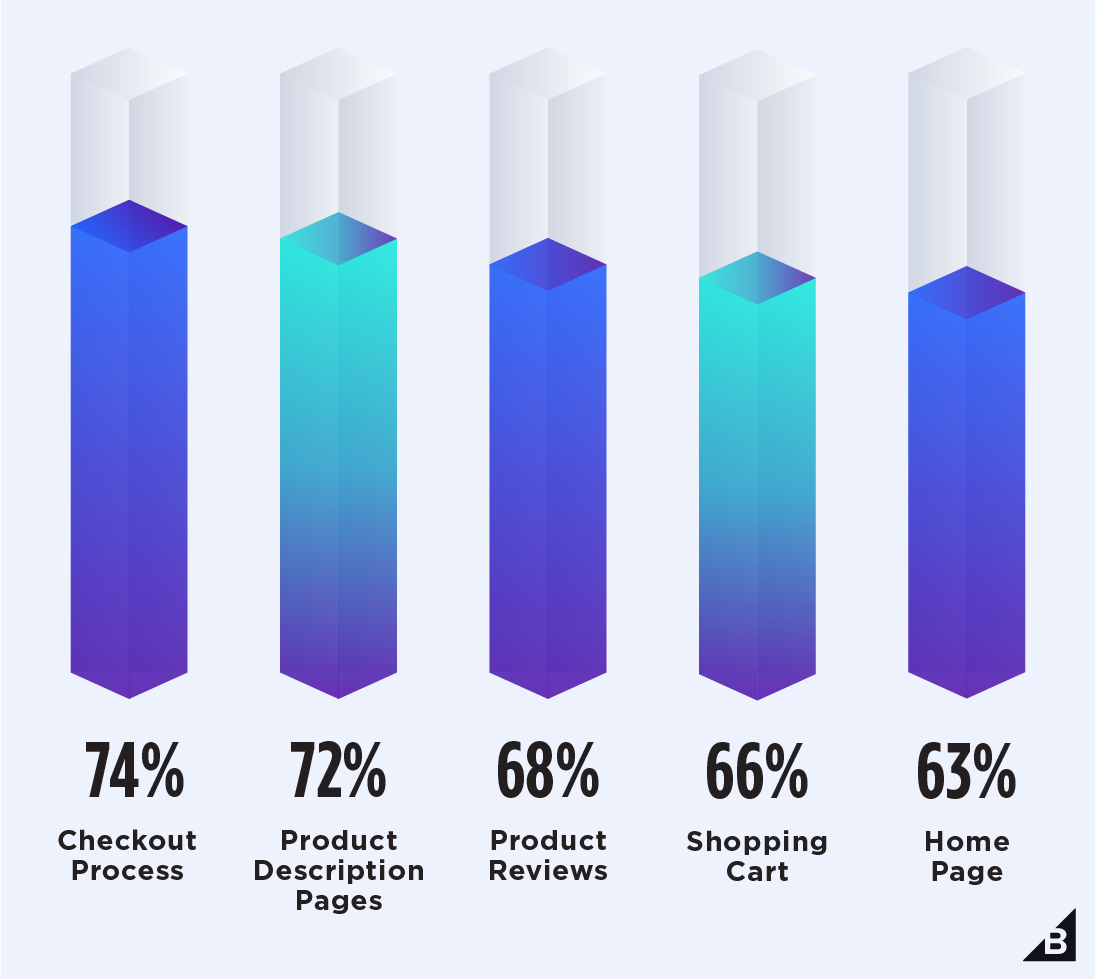
Discover the Future of Ecommerce
Download our report for an in-depth analysis of consumer shopping trends — from data privacy and sustainability to cryptocurrency and shopping on the Metaverse.
Access NowThe Final Word
As technologies continue to advance and our global village becomes ever more interconnected, international expansion will be not just a choice, but a necessity. Luckily, platforms like BigCommerce are already aiding merchants today, both big and small, to expand across borders and scale their businesses exponentially.
Of course, if you’re still a small, local business, the words “global ecommerce” may sound daunting — but with the help of this guide, you’ll have extra insight into what you can do to move your business into international territories.



